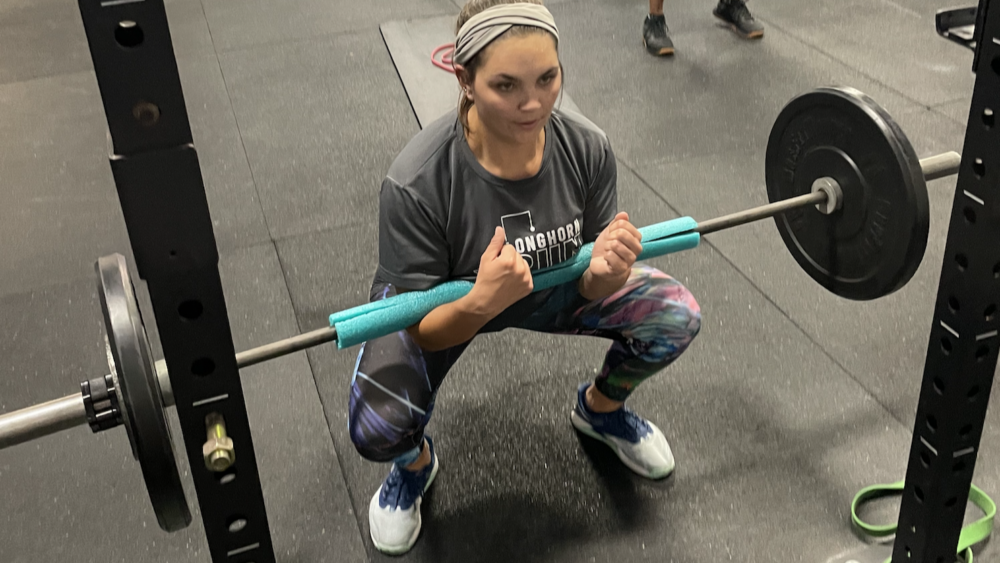
I’ve written about this before, but I believe I’ve written about more so in the “what CrossFit means to me” perspective, as opposed to what CrossFit the methodology really is. So, today we’ll go inside the lecture any and every CrossFit trainer receives at their initial Level 1 seminar.
By definition, CrossFit is constantly VARIED, FUNCTIONAL movements, at high INTENSITY. The keywords of which to focus on are obvious, especially with the capitalization. Variance, functionality and intensity.
Variance is the most simple one. However, it is important to distinguish what variance is NOT. Variance is NOT random. Random by definition is made, done, happening or choosing WITHOUT method or CONSCIOUS decision. Random is do anything, whenever and however. That is not what CrossFit is. CrossFit programming requires careful planning, thought, and execution. Variance, by definition, is the fact or quality of being different, divergent, or inconsistent. That’s what we wanted. We were looking for a pattern that had no pattern and in order to be truly variant you have to know what’s been done and what needs to be done. Variance is an actual statistic of math. It is a quantity equal to the square of standard deviation.
Functional is the trickiest of the three. When I say functional movement, I could be talking to ten different people and every single one of them could have a different thought as to what functional movement really is. So, before we go any further, we have to agree on what functional really means. We define it as those movements that are categorically unique in their ability to express power. What does that mean? We’re looking for movements that move a large load for a long distance and quickly. For example, cleans, bar muscle up and burpees. A lot of weight, moving a long distance (generally 4 feet or more) and doing it super fast. Bicep curls, leg extensions, and shoulder flys. Not a lot of weight, not moving very far (maybe a foot) and not very fast. Functional movements have a few other defining characteristics too. They’re natural. Squatting for instance was the very first way a human ever sat down. They’re safe post-1 rep max. We all know what happens when we add just 10 more pounds to our deadlift max. Nothing. Bar doesn’t move. They’re universal motor recruitment patterns. Next time your dog or cat gets up on your sofa, think about what movement that looks like. ….a muscle-up. They’re compound, yet irreducible. The person who squats and deadlifts will be great at leg curls and leg extensions. The person who only does leg curls and leg extensions will not necessarily be good at deadlifts and squats. They’re also movements that are multi-joint. The deadlift needs the hips and knees to function properly in order to perform it. The leg curl only needs the knee to work. And lastly, they’re core to extremity. This means that in order to perform the movement properly, you have to use big muscles and joints in the core first and finish with the small muscles, but fast movers, in the extremities.
The last of these three key terms is intensity. Intensity is actually one of the easier ones for us to grasp, but for some reason the world at large still avoids intensity like the plague, yet claims their programs offer it. The program that falls the shortest is “Orange Theory.” Their prescription for intensity is heart rate. Well, I’m here to tell you that heart rate is NOT a measure of intensity. It’s a correlate. I’ll give you an example. Suppose you get into a car accident. Right as the collision is about to happen, what happens to your heart rate? Yes, it goes up. Is that intense exercise? It’s an intense EXPERIENCE for sure, but it’s not intense exercise. CrossFit redefined what it meant to be fit when we took the definition exercise physiologists gave to intensity. They defined it as power. Yes, power from 11th grade physics. Power is force x distance/time. How heavy? How far did you move it? How long did it take you? The most important of these variables of course being time because by definition the longer a physical task takes you the less intense it was. Oh, you go on long runs and don’t stop? Cool. But instead – let’s think about it this way – run a 5k in under 30 minutes and tell me how you feel about your ability to go on long runs without stopping then. Intensity in exercise is moving a large load a long distance and quickly.
Be impressed with intensity not volume. That is CrossFit.
